
Content
Welcome to the Club of Amsterdam Journal.
The Future Now Show: Social Banking with Christian Heyner
It is a strange and unfortunate fact of life that many things people in the developed world pay little for cost substantially more in the developing world. One of these is banking, often costly in the developing world while in much of the developed world banks now offer you money to encourage you to open a charges-free account. Meanwhile, the once highly praised micro-credit systems are now charging loan shark interest rates in some poor countries. This is the story of a new attempt to change all that by creating a global low-cost banking service cleverly designed to be accessible to the poorest. And you can play a part. – Paul Holister
Felix F Bopp, Founder & Chairman
Does Passion Ignite Perception
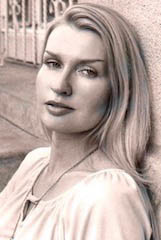
by Mara Lemanis
So many of us have grown up with and then outgrown the division between passion and reason. But early imprinting still urges us to demote one or the other as we set out on our personal course or career, convictions intact.
Hamlet’s cry: “Give me that man that is not passion’s slave, and I will wear him in my heart’s core,” is a great motto for many.
Conversely, in The Mirror and the Lamp, the great critic M.H. Abrams refers to a quote from the 18th c. playwright John Dennis: “The more passion there is, the better the Poetry.” But I admit to having read poems where passion peaks into barbaric yawps.
We’ve been flooded by many therapeutic formulas both to quiet raging passions and skim top-heavy doses of intellection. One of these, especially trendy in today’s culture, is “Mindfulness,” which some objective heads deride as “McMindfulness” — a marketing tool.
In fact the mindfulness technique has proved effective at reducing anxiety and stress in many people, deprogramming harmful emotions and addictive passions. It’s an approach that works. Apparently it’s also a program that has become a commodity.
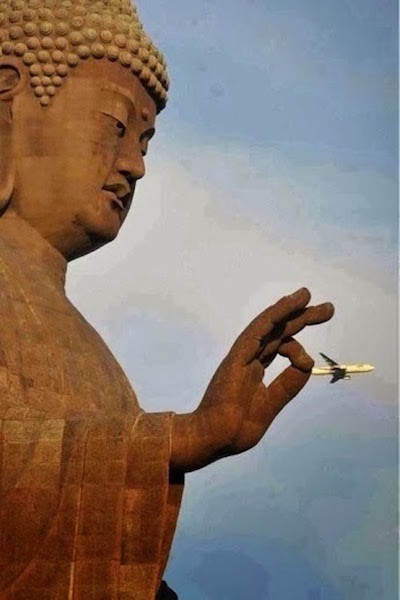
To Be or Not To Be Mindful
We know it too as a concept birthed through Buddhism. Its original aim was meant to generate unbiased perception of actual events in the world, understanding of one’s own involvement in those events, and compassionate reaction toward all participants, especially those suffering adversity. It underscored exercising compassion for those on opposite ends to one’s own perceptions.
But as practiced in the west mindfulness often glosses over the original Buddhist emphasis on compassion, which welcomes foreign and contrary viewpoints that challenge our personal perceptions. Yet following the western model, it can’t be denied that when we’re less depressed or anxious, or less obsessed, we’re prone to make more room for the anxieties and woes of others.
I think it’s worth reflecting on how compassion swells into passion. Compassion absorbs sympathy for another person’s sensibility and pain and grows into a strong desire to stop the pain. At that point it transforms into empathy; so it makes sense that strong desire equates with passion. But this is not the common measure.
Compulsion or Passion?
Clinical psychologists distinguish between compulsive passion and voluntary passion. Clearly compulsions are not under one’s control, whereas voluntary passions are engaged in freely.
One of the most valuable insights of Buddhism is how it alerts us to awareness of things in relation to each other, evolving into an awareness of their relative value – prodding us to remember (Smriti) that whatever emotion we experience exists in relation to a mosaic of feelings with either benevolent or noxious outcomes. In remembering, one rises past present-centered, non-judgmental mindfulness toward insights keenly retained. Often this catalyzes a call to ethical action.
In the west mindfulness strives to dispose of prejudices, to foster awareness of the moment – the self present in the moment. But retention and remembering can also stir our attention toward sensory experience. Which doesn’t mean that the sensation we have retained necessarily craves after something. Instead it embraces the experience (anubhavah) of our being in the world, often inspired through the medium of art – music, dance, drama, poetry – and leads us to self-knowledge.
Because this knowledge can come as a sudden insight, its culmination can be enlightenment, self-revelation, even rapture.
Insights Inviting Ecstasy
What elation, for instance, when we evoke the memories of perfumes that suffused our senses as we strolled in a garden full of lilacs, freesias, or honeysuckle, or tread through a forest, inhaling the fragrance of pine. And though the moment of exhilaration is transitory, it unites the self with the natural world. It boosts consciousness.
Mindful memory enables us to freely recall the feeling of blissful attention evoked by strands of music, images in particular paintings, glints of wit and vision released by certain poems and texts. Or the euphoric scent of intimacy when we make love in contrast to the tang of physical contact when we have sex.
Embracing one’s awakened being expresses itself too in the continuous pleasure of work we perform at the peak of our abilities and give to others. In all these ways mindfulness morphs into self-actualization.
The character of self-actualized people is autonomous. They don’t cater to societal approval; they seek fulfillment in purposes beyond themselves. Such people detail many instances of “peak experiences” kindred to a sense of ecstasy and oneness with the universe, sustained within a strong, calm, centered self.
Probably the most dramatic kind of mindfulness beyond ego, involving millions of people, is witnessed in social reform. This is well-documented in the passionate self-sacrifice of persons like Gandhi; Martin Luther King; the civil rights worker Viola Liuzzo, a white woman relentlessly struggling against segregation before she was felled by a gunman. Their biographies are clear accounts of empathy with those made wretched by injustice and detail their passionate efforts to kindle mankind’s humanity.
The passion for reform among such people can’t be reduced to ego drives. They consider themselves as a vehicle to rouse others who are more concerned with personal acquisition, or, for that matter, personal liberation.
Critical Thinking From the Buddha
Here is where the standardized objective of Buddhism – nirvana, which translates to no/not craving – branches off from liberation for oneself (with the rationale that what you do for yourself automatically contributes to others) and grows into the pursuit of liberation for all humanity. And here again, it is persons like Bhimrao Ramji Ambedkar, born into the caste of untouchables, who launched human rights campaigns for India’s oppressed and later converted to Buddhism; A.T. Ariyaratne, a high school teacher who helmed a grassroots movement to upgrade agriculture, education, and health that was enacted throughout 15 thousand villages in Sri Lanka; and Buddhadasa Bhikku, who initiated “engaged Buddhism” in Thailand, motivating Theravada monks to do actual work in their communities instead of solely cultivating meditative mastery. Many of these adherents have become “Development Monks” in Thailand and Cambodia. They engage in physical as well as spiritual development to reforest and recultivate the environment and foster economic growth without destroying the countryside.
All these movements inspired mindfulness not just beyond ego and passionate avowal but beyond the formal creeds of Buddhism. It was Gautama Buddha himself who warned against accepting his own teachings without first studying, thinking, observing, and investigating before deciding what is true. He strongly advocated freedom of thought and freedom of inquiry. And he invited criticism. Not negation of thought or rationality. Gautama’s attitude highlights the kind of mindfulness in which attentive thoughts are followed by actions that bear fruit. These percepts rise to a flame of passion that does not burn out but ignites the sense of what it means to bear loving kindness for the world and its people.
Mara Lemanis has been a teacher and scholar of literature and film at Stanford and Yale; her essays have been selected for 20th CENTURY LITERARY CRITICISM and are included in undergraduate student textbooks in the U.S.
She has worked as an archivist for Historical Preservation with particular interest in the study of Oglala Sioux sites at Pine Ridge and Wounded Knee.
Her recent work has been with the IRC to assist refugees in Oakland, California.
Her father, Osvalds J. Lemanis, was an internationally renowned Latvian choreographer (The Royal Order of Vasa – Gustav V).
The Library of Congress
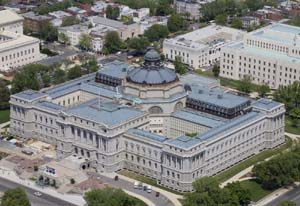
The Library of Congress (LOC) is the research library that officially serves the United States Congress and is the de facto national library of the United States. It is the oldest federal cultural institution in the United States.
The Library of Congress claims to be the largest library in the world. Its “collections are universal, not limited by subject, format, or national boundary, and include research materials from all parts of the world and in more than 450 languages.
The Library has kept the “American Memory” name for its public domain website, which today contains 15 million digital objects, comprising over 7 petabytes.
American Memory is a source for public domain image resources, as well as audio, video, and archived Web content.
The Future Now Show
Every month we roam through current events, discoveries, and challenges – sparking discussion about the connection between today and the futures we’re making – and what we need, from strategy to vision – to make the best ones.
Shape the future now, where near-future impact counts and visions and strategies for preferred futures start.
Do we rise above global challenges? Or do we succumb to them? The Future Now Show explores how we can shape our future now – where near-future impact counts. We showcase strategies and solutions that create futures that work.
Every month we roam through current events, discoveries, and challenges – sparking discussion about the connection between today and the futures we’re making – and what we need, from strategy to vision – to make the best ones.
February 2018
with
Christian Heyner
It is a strange and unfortunate fact of life that many things people in the developed world pay little for cost substantially more in the developing world. One of these is banking, often costly in the developing world while in much of the developed world banks now offer you money to encourage you to open a charges-free account. Meanwhile, the once highly praised micro-credit systems are now charging loan shark interest rates in some poor countries. This is the story of a new attempt to change all that by creating a global low-cost banking service cleverly designed to be accessible to the poorest. And you can play a part. – Paul Holister
Credits
Christian Heyner, President of the board at 1bank4all Gründungsverein
www.1bank4all.net
Paul Holister, Editor, Summary Text
Credits
Katie Aquino, aka “Miss Metaverse”, Futurista™, USA
and join the dialogue in our
LinkedIn Group: The Future Now Show
World’s biggest ‘smart city’ to rise in Philippines
Philippines FUTURE BIGGEST PROJECTS 2018-2030
“You will see the mega projects that will change the philippines. Philippines passed form a poor country to a emerging country in less than a generation. Manila is now very modern and is full of skyscrapers,malls and other modern things. The skyline of Manila is one of the best in the world. The philippines is a place to travel and visit. The 3 mega projects that will change the country are :the manila mega subway, the Eco friendly city and the city of pearl. One day, Phlippines will be developed . In 2030, the country will be a middle income country. The city of pearl will be the biggest smart city on earth and the manila mega subway will be the biggest infrastructure project of the country.”

BBC HardTalk On The Road in the Philippines
News about the Future
This is how money grows from trees
BioCarbon Engineering is featured in a ground-breaking report from World Resources Institute and The Nature Conservancy.
As we encounter constraints in the planet’s resources, pressure is growing to find new ways to enhance productivity and recover lost natural assets. Land restoration offers a path forward. Companies that develop profitable and scalable business models for restoration have the potential to grow substantially.

UNICEF Sudan Humanitarian Situation Report, December 2017
In addition to the response to the protracted humanitarian situation, caused by armed conflict, floods and epidemics, UNICEF responded in 2017 mainly to three new emergencies related to the high rates of malnutrition in newly accessible areas, the Acute Watery Diarrhoea outbreak and the high influx of South Sudanese refugees. Also, the year marked a huge step forward in protecting children from violations in armed conflict by implementing the Action Plan signed between UN and the government.
In numbers
2,300,000 children in need
4,800,000 people
# of people who need Humanitarian Assistance (Source: Sudan Humanitarian Needs Overview 2017)
1,100,000 children
2,300,000 people
# of internally displaced people (Source: Sudan Humanitarian Needs Overview 2017)
126,987 children
192,404 people
# of South Sudanese refugees since January 2017 (Source: ’Sudan: Refugees from South Sudan as of 15 December 2017’ reported by UNHCR. Around 66% of South Sudanese refugees are children)
How Nanotechnology Will Bring The End of Scarcity
by James Burke
Recommended Book

Dawn of the New Everything: A Journey Through Virtual Reality
by Jaron Lanier
Jaron Lanier, ‘the father of Virtual Reality … a high-tech genius’ (Sunday Times), tells the extraordinary story of how in just over three decades Virtual Reality went from being a dream to a reality – and how its power to turn dreams into realities will transform us and our world.
Virtual Reality has long been one of the dominant clichés of science fiction. Now Virtual Reality is a reality: those big headsets that make people look ridiculous, even while radiating startled delight; the place where war veterans overcome PTSD, surgeries are trialled, aircraft and cities are designed. But VR is far more interesting than any single technology, however spectacular. It is, in fact, the most effective device ever invented for researching what a human being actually is – and how we think and feel.
More than thirty years ago, legendary computer scientist, visionary and artist Jaron Lanier pioneered its invention. Here, in what is likely to be one of the most unusual books you ever read, he blends scientific investigation, philosophical thought experiment and his memoir of a life lived at the centre of digital innovation to explain what VR really is: the science of comprehensive illusion; the extension of the intimate magic of earliest childhood into adulthood; a hint of what life would be like without any limits.
As Lanier shows, we are standing on the threshold of an entirely new realm of human creativity, expression, communication and experience. While we can use VR to test our relationship with reality, it will test us in return, for how we choose to use it will reveal who we truly are.
Welcome to a mind-expanding, life-enhancing, world-changing adventure.
Common Sense – helping kids thrive in a world of media and technology
Common Sense is the leading independent nonprofit organization dedicated to helping kids thrive in a world of media and technology. We empower parents, teachers, and policymakers by providing unbiased information, trusted advice, and innovative tools to help them harness the power of media and technology as a positive force in all kids’ lives.
Media and technology are at the very center of all our lives today — especially our children’s. Kids today spend over 50 hours of screen time every week. The media content they consume and create has a profound impact on their social, emotional, cognitive, and physical development. Learning how to use media and technology wisely is an essential skill for life and learning in the 21st century. But parents, teachers, and policymakers struggle to keep up with the rapidly changing digital world in which our children live and learn. Now more than ever, they need a trusted guide to help them navigate a world where change is the only constant.
Futurist Portrait: Bertalan Meskó
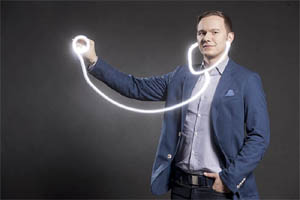
Dr. Bertalan Meskó MD, PhD. – The Medical Futurist, Private Professor at Semmelweis University, keynote speaker, author, visionary. A geek physician with a PhD in genomics and Amazon Top 100 author, he envisions the impact of digital health technologies on the future of healthcare, and helps patients, doctors, government regulators and companies make it a reality.
The mission of The Medical Futurist Institute is to initiate public discussions about how the old paradigm of the paternalistic model of medicine is transforming into an equal level partnership between patients and professionals and how it is aided and augmented by disruptive technologies. By providing reports, publications and daily commentary on new technological innovations, the Institute aims at preparing every stakeholder of healthcare for adopting digital health in a way that the human component remains decisive.
Under the term “digital health”, advanced medical technologies, disruptive innovations and digital communication have gradually become inseparable from providing the best practice healthcare. While the cost of treating chronic conditions is increasing and doctor shortages are imminent worldwide, the needed transformation in the structure of healthcare and medicine fails to catch up with the rapid progress of the medical technology industry.
This transition is slowed down by strict regulations; the reluctance of stakeholders in healthcare to change; and ignoring the importance of cultural changes and the human factor in an increasingly technological world. With access and adoption of technology getting higher, the risk of patients primarily turning to an accessible, but unregulated technological solution for their health problem is likely to increase. We need to acknowledge the ongoing cultural transformation and include digital health in the practice of medicine.
Grand Challenges
Embrace disruptive medical technologies
Medical professionals and patients must prepare for a technological revolution in medicine – the only way to make healthcare effective and more humanistic.
Put patients in the center of healthcare
Patients must become experts on their own health so they can be involved in decisions about their health, while also taking part in designing healthcare
Digitize Healthcare Information
Digitalization can make care affordable and available, ensuring sustainability and growing our understanding of disease.
Shift focus from treatment to prevention
Live healthier lives and prevent disease by reforming healthcare based on widespread access to health data.
Technology and the Future of Medicine


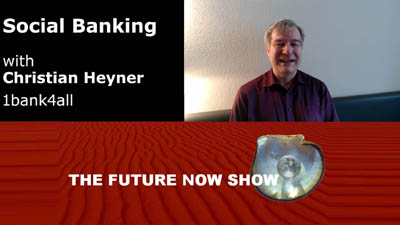





Customer Reviews
Thanks for submitting your comment!